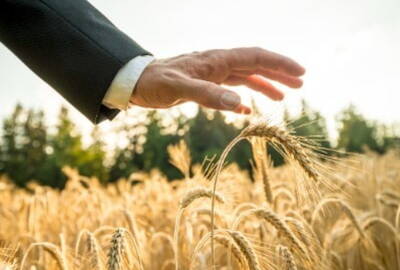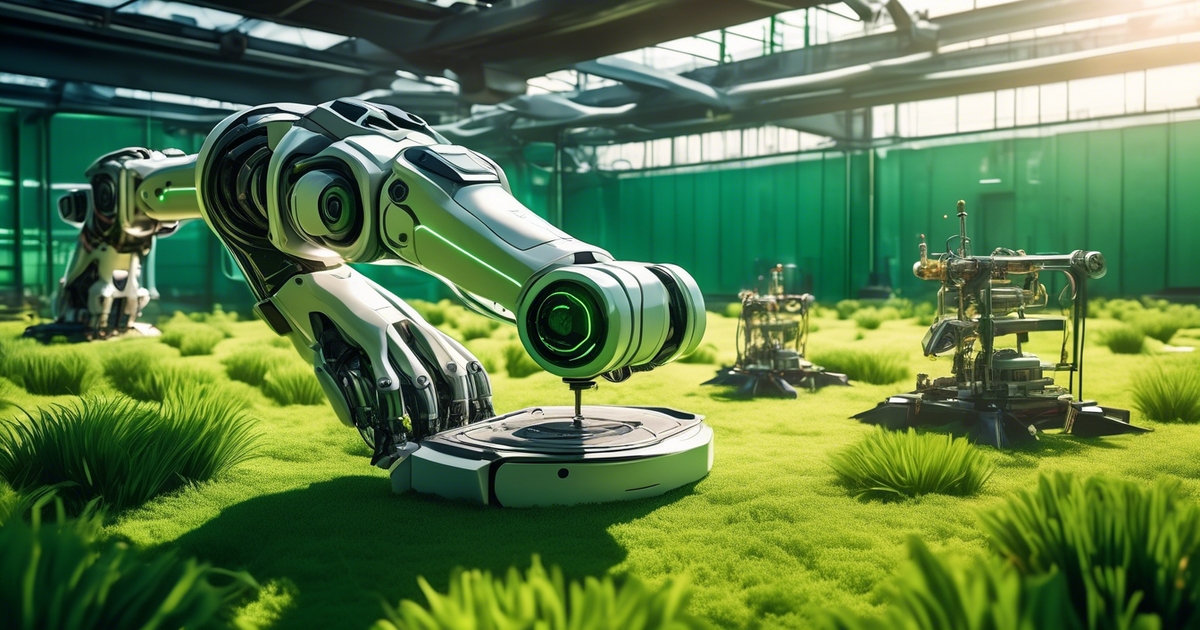The Use of Ai (Artificial Intelligence) in Agriculture & Farming
Ai is the latest buzzword in many sectors and industries. It is creating a lot of excitement for many reasons. Here we are looking at its use within the agricultural and farming industries.
What is Ai?
Ai is short for Artificial Intelligence. HCL Tech have described it as follows; “Artificial intelligence is the science of making machines that can think like humans. It can do things that are considered "smart." AI technology can process large amounts of data in ways, unlike humans. The goal for AI is to be able to do things such as recognize patterns, make decisions, and judge like humans”.
The Use of Ai in Agriculture & Farming
Did you know that artificial intelligence (AI) is revolutionising the agricultural industry at a rapid pace? From enhancing crop yields to predicting weather patterns and optimising resource management, AI's impact on agriculture is profound. Imagine machines analysing soil conditions, monitoring crop health, monitoring dairy cows for milk production and even autonomously harvesting produce. With AI in agriculture, farmers can make data-driven decisions leading to increased efficiency and sustainability. For decision-makers in agriculture, properly utilising AI can help to increase productivity while decreasing waste amid increasing costs.
How can Ai be used in the agricultural industry?
There are many potential uses for ai within agriculture. Here are just some of them;
1. Crop Health, Soil & Field Analysis.
There is no doubt that soil health is vital for the future of global agriculture.
Ai can be used to assess soil health by analysing data from sensors and images. This includes measuring moisture levels, nutrient content and identifying areas that require changes. Such detailed soil analysis helps in customising the fertiliser and irrigation needs for different parts of a field, ensuring that each area receives exactly what it needs for optimal growth, thereby reducing waste and improving the overall yields from crops.
Through detailed analysis of soil and crop data, Ai enables the precise application of fertilisers and pesticides, reducing the need for blanket applications. This targeted approach not only cuts down on costs and environmental impact but also promotes healthier crop growth by preventing over-application, which can be harmful to both plants and soil health.
When it comes to the crops themselves, AI-enabled drones and satellites can capture high-resolution images of the crops, which AI algorithms can then analyse in order to monitor plant health, growth and detect signs of stress, disease or even pest infestation. Early detection allows farmers to address issues promptly, minimising potential crop losses. This technology can also monitor plant growth and predict yield with high accuracy, aiding in harvest planning and logistics.
2. Livestock and Dairy Health Monitoring and Management.
AI (Artificial Intelligence) is increasingly playing a crucial role in transforming livestock management by enhancing animal health, welfare and overall productivity. The integration of AI in livestock health management involves various innovative technologies and approaches designed to monitor, diagnose and predict health issues in animals.
Ai can be used in livestock health applications, such as using sensors on livestock to keep track of various health indicators, such as temperature, heart rates and activity levels. By analysing and keeping track of this data, Ai can be used to detect any abnormalities that could be of concern to Livestock Managers and it means that any problems can be dealt with promptly before they could worsen.
Within the dairy industry, by using Ai within the milking process, it can help detect any issues with cows that may affect their milk production, as well as achieve the ultimate efficiency with milk production.
3. Autonomous Machinery
Often referred to as Smart Farming, Ai can be used in the operation of autonomous machinery in agriculture, offering solutions that can drastically improve efficiency, reduce labour requirements and enhance the overall precision in farming operations, meaning greater long-term profitability for the farms themselves. Examples of where Ai is used in agricultural machinery includes Self-Driving Tractorsand Robotic Harvesters.
In fact, there are a wide range of tasks that Ai Machinery can perform on farms including using GPS and AI to navigate fields accurately, monitoring and analysing crops to make the user aware of any abnormalities, so that they can act fast and prevent any disruptions.
Machinery can also be used with Ai to spread fertilisers and seeds. By using precise data and precise mapping and spreading systems, it will reduce the amount of wastage and ensure that the farm is operating as efficiently as possible.
Ai can even be used to predict yields with a high degree of accuracy. This means that farmers can use this knowledge in order to plan for the future and make decisions accordingly.
4. Sustainability
Sustainable Farming “is farming that meets the needs of existing and future generations, while also ensuring profitability, environmental health and social and economic equity. It favours techniques that emulate nature–to preserve soil fertility, prevent water pollution and protect biodiversity.” (https://www.unep.org/news-and-stories/story/beginners-guide-sustainable-farming)
Many people believe that Ai could be the answer to sustainable farming as it:
· Optimises the use of resources
· Can enhance crop yields and their overall quality
· Can improve soil health
· Reduces greenhouse gas emissions
All of this results in less wastage – which is a key component in sustainable farming.
Benefits vs Drawbacks
The Main Benefits of using Ai in Agriculture.
The main benefits of using Ai in Agriculture are more efficiency, more sustainable farming for future generations and operating more productively, leading to greater economical benefits.
Drawbacks to Using Ai Within Agriculture.
The main drawbacks to using ai in agriculture is that there may be high initial costs to implement systems, there may be some job losses (where things that were done manually before can be automated) and it may not be 100% reliable. So people should show some caution when using Ai and not over-rely on it, as there can be some error.
Conclusion
Ai is a massive talking point and can be utilised in various applications within the agricultural and farming industry. In most cases, it seems to be revolutionising farming practices and there seems to be some great benefits being achieved through its use in various applications. Ai can have massive benefits to both farmers and the environment. There may be some drawbacks to its use, so it’s important that we still use an air of caution in some cases. However, overall, there’s no doubt that it’s impact has been huge and will continue to be for the future of farming.
Frequently Asked Questions
How can AI benefit the agriculture industry?
AI offers precision farming techniques, enhancing crop monitoring, predicting yields, and optimising resource usage. It aids in livestock health management and automates tedious tasks like weeding and harvesting.
Can AI help in detecting diseases and pests on farms?
Yes, AI plays a crucial role in disease and pest detection by analysing data to identify potential threats early. This enables farmers to take proactive measures to protect their crops effectively.
What are some challenges faced in implementing AI in agriculture?
Challenges include high initial costs of technology adoption, integration complexity with existing systems, data privacy concerns and ensuring proper training for users to utilise AI tools efficiently.
What are the future prospects of integrating AI further into agriculture practices?
The future holds promise for increased automation through robotics powered by advanced AI algorithms. This will lead to more efficient farming processes, reduced labour dependency, higher yields and more sustainable agricultural practices.













